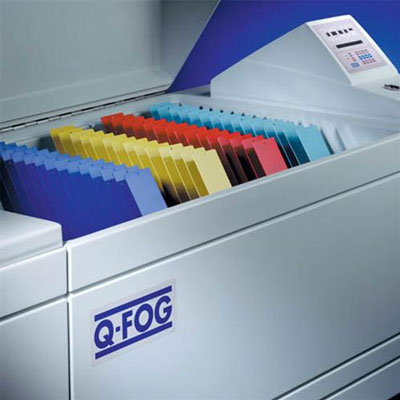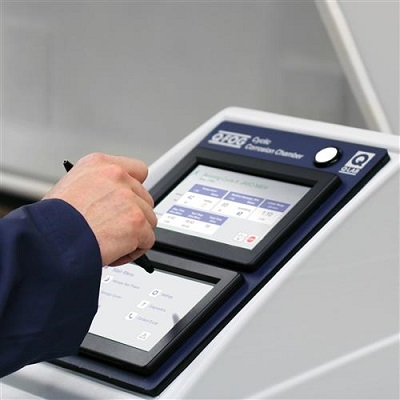Cyclic Corrosion Testing
Prior to cyclic corrosion testing, conventional salt spray (a continuous salt spray at 35˚C), was the standard way to simulate corrosion in a lab. Because conventional salt spray methods failed to mimic the natural wet/dry cycles of the outdoors, test results frequently provided poor correlation to outdoors.
In a Q-FOG cyclic corrosion tester, specimens are exposed to a series of different environments in a repetitive cycle that mimics the outdoors. Simple cycles, such as Prohesion, may consist of cycling between salt fog and dry conditions. More sophisticated automotive methods may call for multi-step cycles that incorporate humidity or condensation, along with salt spray and dry-off.
Within one Q-FOG chamber, it is possible to cycle through a series of the most significant corrosion environments. Even extremely complex test cycles can easily be programmed with the Q-FOG controller.
Q-FOG corrosion test chambers are available in two types. Model SSP performs traditional salt spray and Prohesion tests. Model CCT performs salt spray, Prohesion, and 100% humidity for most cyclic automotive tests.
Model SSP for Prohesion or Conventional Salt Spray Tests
The Q-FOG SSP corrosion tester can perform numerous accelerated corrosion tests, including continuous salt spray (ASTM B117 and ISO 9227) and Prohesion (ASTM G85 Annex 5). Visit our standards page or see LF-8131 – Partial List of Standards Met by Q-FOG for more information.
The Prohesion test uses fast cycling, rapid temperature changes, a low humidity dry-off cycle and a different corrosive solution to provide a more realistic test. Many researchers have found this test useful for industrial maintenance coatings.
Continuous salt spray exposures are widely specified for testing components and coatings for corrosion resistance. Applications include plated and painted finishes, aerospace and military components, and electrical/electronic systems.
Most of these tests are performed to particular specifications such as ASTM B117 (Salt Spray), and BS 3900 F4. These tests are widely used for relative corrosion testing. They are typically run at an elevated temperature and do not incorporate a dry-off cycle. They require heated, humidified air for the spray.
Model CCT for Corrosion Research and Cyclic Automotive Tests
The Q-FOG model CCT has all the advantages of the model SSP, but adds the flexibility of including 100% humidity.
Automotive corrosion test methods typically call for exposing specimens to a repetitive cycle of salt spray, high humidity, low humidity dry-off, and ambient conditions. These test methods were originally developed as labor intensive manual procedures. The multi-functional Q-FOG CCT corrosion tester is designed to perform these cyclic tests automatically in a single chamber. Additionally, the CCT model is able to run Copper-Accelerated Acetic-Acid Salt Spray (CASS) tests such as ASTM B368 or ISO 9227 CASS.
Q-FOG model CCT advantages include the elimination of:
- manual moving of test specimens from one chamber to another
- laborious spraying of test specimens
- variability in results from excessive specimen handling
Affordable
Q-FOG cyclic salt spray corrosion test offer state of the art corrosion testing technology, reliability, ease of operation and easy maintenance – all at a remarkably affordable price.
Models
- Q-FOG SSP-600: conventional salt spray and Prohesion tests, 640 liter chamber volume
- Q-FOG SSP-1100: conventional salt spray and Prohesion tests, 1103 liter chamber volume
- Q-FOG CCT-600: conventional salt spray, Prohesion, and 100% humidity, 640 liter chamber volume
- Q-FOG CCT-1100: conventional salt spray, Prohesion, and 100% humidity, 1103 liter chamber volume










